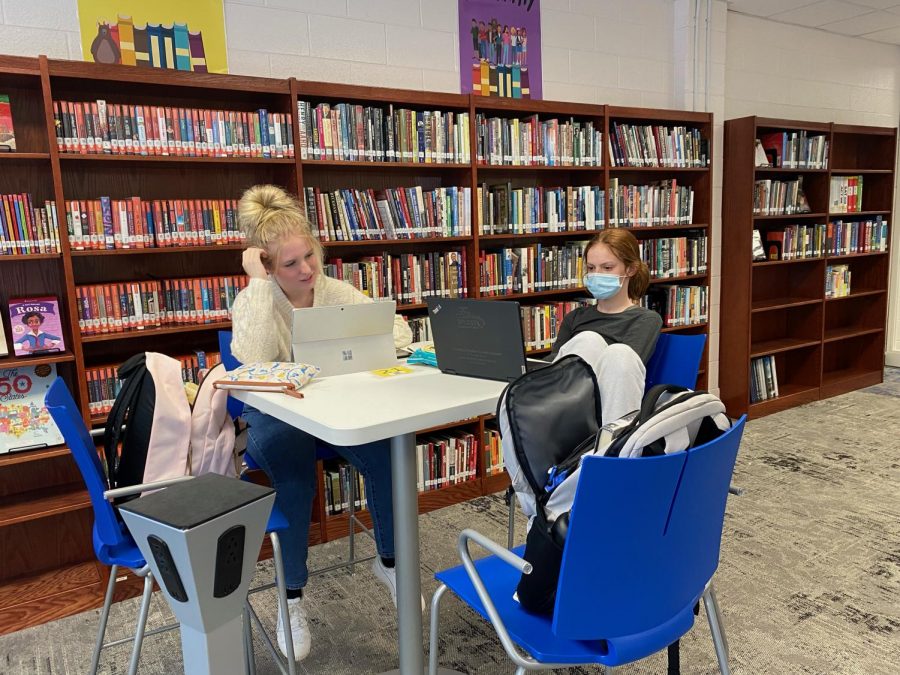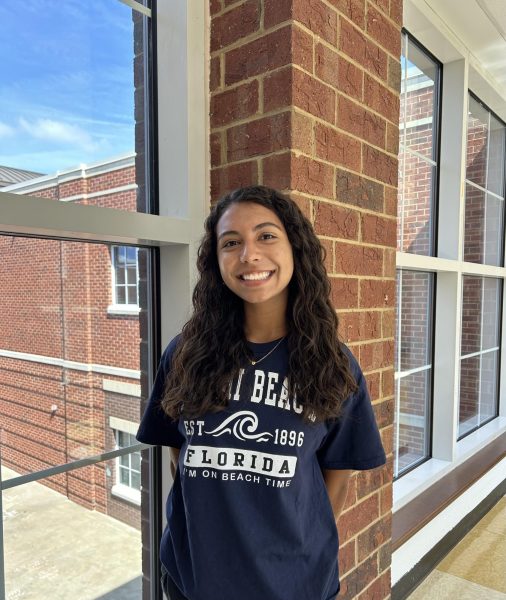“Mask-Fishing:” A New Era of Exposed Faces
Students study in the library, one with a mask and one maskless.
November 10, 2021
It’s been over 600 days since Americans began to wear masks, shielding the bottom half of their faces from the world.
In the 2020-2021 academic year, students who attended school in-person had to wonder what their teachers truly looked like and strain to remember their classmates’ appearances who they hadn’t seen since lockdown.
Now, effective Nov. 1, masks were deemed optional, and with this, a new phase has begun: an introduction to noses and mouths that have been completely forgotten about.
In regards to the newly-revealed faces, the phrase “mask-fishing” has become a part of students’ vocabulary.
Mask-fishing is defined as looking different with a mask compared to without it.
When everyone was required to wear masks, many students said their brains conceptualized what their teachers and peers’ faces looked like. When masks came off, the reality didn’t correlate with what they had in mind.
“Having not seeing so many of [people’s] faces for pretty much two years made me kind of shocked,” said freshman Negin Soltanian. “It was kind of a fun game to see how many faces matched what I imagined them to be.”
Freshman Sadie Furr agreed.
“I was either like ‘OMG! I didn’t know you looked like that!’ or ‘I’ve been lied to,’” said Furr.
Not only have students been stupefied by naked noses and lips, but teachers as well.
“Basically 40% of my students who aren’t wearing masks look absolutely nothing like I pictured it,” said English teacher Nishi Patel.
Before the mask-optional policy, teachers wouldn’t be able to recognize their mask-less students if they weren’t sitting at their usual desk.
“It’s so much easier to remember your faces because after teaching so many students, they begin to look the same with masks on,” said history teacher Michael Shea. “I’ve also noticed that it’s easier to read facial expressions and understand what students are saying without their masks.”
While some, like Shea, enjoy being able to understand facial expressions, others continue to wear a mask to hide their own.
“I honestly keep my mask on because [of] COVID, and after being so used to it, I do these weird facial expressions under it, and I feel like I won’t be able to filter [them] without a mask,” said freshman Nyla Turner.
As COVID-19 cases continue to diminish, perhaps more will become adapted to seeing scowls and smiles.

